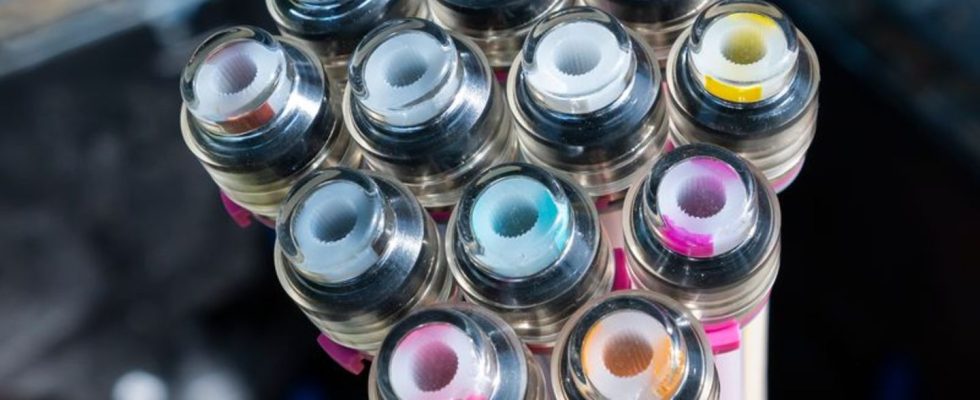federal government
Wissing: The expansion of fiber optics and mobile communications is picking up speed
The end of a bundle of fiber optic cables at a construction site. Of the 100 planned measures, 39 points are still open on a website of the Digital Ministry. photo
© Matthias Rietschel/dpa-Zentralbild/dpa
A year ago, the federal government presented a “gigabit strategy”: 100 concrete measures were intended to promote network expansion. Many of the points have now been ticked off – but by no means all of them.
According to the Digital Ministry, the expansion of fast Internet connections in Germany is progressing rapidly. Last year alone, around four million additional households received a fiber optic connection, said the Minister for Digital and Transport Volker Wissing (FDP) on the occasion of the celebratory event “One year of gigabit strategy” on Tuesday. A year after the start, the goals of a comprehensive and high-performance gigabit supply have come significantly closer. “It’s never progressed as fast as now,” said Wissing in Berlin.
According to Wissing, by the end of 2022, around every fourth household in Germany had a fiber optic connection. The expansion of high-speed networks is also progressing rapidly in mobile communications. Within a year, coverage with the fast, fifth-generation mobile network (5G) increased to 87 percent of the area in Germany, which corresponds to an increase of 22 percentage points.
A comprehensive, powerful and reliable supply of gigabit networks is the basis for successful digitization and the future viability of Germany, Wissing told the German Press Agency. “In the past twelve months, we have succeeded in triggering additional momentum in the expansion of fiber optics and mobile communications.” His ministry’s approach is to bring everyone involved to the table and tackle the ambitious goals together.
Package of measures of 100 projects
A year ago, the traffic light coalition presented a “gigabit strategy”, a package of 100 projects designed primarily to simplify and speed up the approval process for network expansion. In the paper, the federal government has set itself the goal of making fiber optics into the home and the latest mobile communications standard available “wherever people live, work or travel” by 2030. As a first step, the coalition wants to push ahead with the expansion so that at least every second household can use fiber optics by the end of 2025.
Of the 100 planned measures, only 39 points are shown as open on a website of the Digital Ministry (35 “in progress” and 4 “not yet started”). 32 were therefore successfully completed. The rest of 29 measures are ongoing measures.
Among the measures, Wissing highlighted the adoption of the DIN standard 18220, which is intended to facilitate the alternative cable laying method, trenching. With trenching, fiber optic cables are not laid in deep ditches that have to be laboriously excavated, but in much shallower slots that are milled in roads and sidewalks.
Haas: Expansion targets are not yet ambitious enough
Srini Gopalan, head of Telekom Germany, said that expanding broadband is a marathon that requires staying power. On the marathon route, however, there are hurdles that have to be cleared. Markus Haas, CEO of Telefónica Deutschland, said the expansion targets were not yet ambitious enough. The complete expansion must be completed before 2030. To do this, approval procedures would have to be further simplified.
At the event, Gopalan, Haas and the new Vodafone Germany boss Philippe Rogge spoke out in favor of sharing the expansion costs with the big Internet companies such as Google, Netflix and Amazon. Ralph Dommermuth, head of Untited Internet AG, on the other hand, said the industry earned good money and didn’t have to ask Internet companies to pay. Customers who like to watch Netflix would also have to pay for the necessary network connection.

